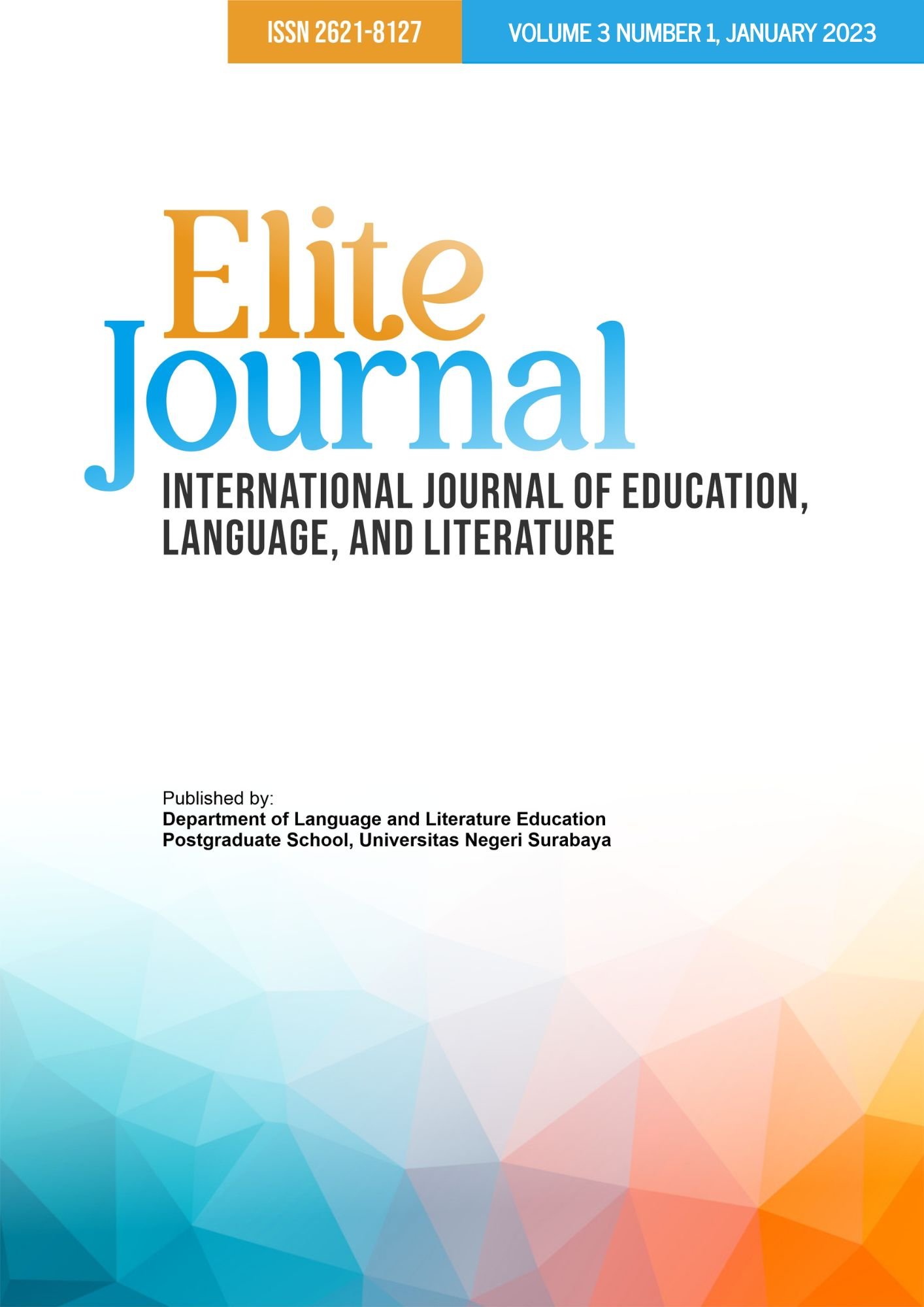THE USE OF ‘MARKED CODE’ AS A POPULAR CULTURE TO EXCLUDE UNWANTED PARTICIPANTS
DOI:
https://doi.org/10.26740/elitejournal.v3n1.p57-66Keywords:
multilingual community, code mixing, popular culture, language attitudeAbstract
Al-Amanah Islamic boarding school has adopted multilingualism so that the obligation to master foreign languages ??is emphasized. The existence of rules for communicating in foreign languages ??encourages students to master Arabic and English. Uniquely, the students still like to share using the languages after graduation. Therefore, this study tries to reveal what foreign languages ??are more often used, what factors make them regulate the choice of language, how is the use of the selected language is pop culture and politeness in choosing the code. This study uses an open questionnaire method so that the data results can be grouped based on several themes. The results of this study indicate that the alumni of Islamic boarding schools prefer to use Arabic rather than English. They also slightly mix up Indonesian and regional languages ??in their conversations. The reason why alumni utilize code-switching is as a marked choice and nostalgia. Meanwhile, they mix foreign languages ??with Indonesian because of unconscious and vocabulary reasons
References
Adrean, M. R., Daud, B., & Kismullah, K. (2019). An analysis of code mixing in Indonesian movie Cek Toko Sebelah. Research in English and Education Journal, 4(4), 147-154.
Amin, A. (2020). Attitude towards language in sociolinguistics settings: A brief overview. REiLA: Journal of Research and Innovation in Language, 2(1), 27-30.
Ardheva, N. N. (2020). Language use among k pop fans: Code mixing and identity. Litera Kultura, 8(2).
Fitriani, A., & Ramadhani, D. N. (2022). Code mixing as a communication style among South Jakarta teenagers in social media. Palakka: Media and Islamic Communication, 3(1), 13-22.
Garvin-Doxas, K., & Barker, L. J. (2004). Communication in computer science classrooms: Understanding defensive climates as a means of creating supportive behaviors. Journal on Educational Resources in Computing (JERIC), 4(1), 2-es.
Holmes, J. (2013). An introduction to sociolinguistics. Routledge.
Mewengkang, C., & Fansury, A. H. (2021). Writing daily status on social media: Code-mixing and code-switching phenomena: A literature review. Klasikal: Journal of Education, Language Teaching and Science, 3(3), 80-87.
Muysken, P. (2000). Bilingual speech: A typology of code-mixing. Cambridge University Press.
Nurhayati, S. & Ginting, E.M. (2014). Code mixing in Break Out music program on NET. TV. Linguistica, 3(4).
Pennycook, A. (2010). Popular cultures, popular languages, and global identities. The handbook of language and globalization, 592-607.
Putra, M. D. S., Silvana, N., Wardani, A. K., & Pandin, M. G. R. (2022). Language ethics in daily life. OSF Preprints, 5.
Wardhaugh, R., & Fuller, J. M. (2021). An introduction to sociolinguistics. John Wiley & Sons.
Yang, W. (2020). Functions and application of code-mixing and code-switching in a second/foreign language classroom. Frontiers in Educational Research, 3(4).
Downloads
Published
How to Cite
Issue
Section
License
Copyright (c) 2023 Inkarizki Amalia, Imroatul Mufidah

This work is licensed under a Creative Commons Attribution 4.0 International License.
 Abstract views: 162
,
Abstract views: 162
, PDF Downloads: 106
PDF Downloads: 106





